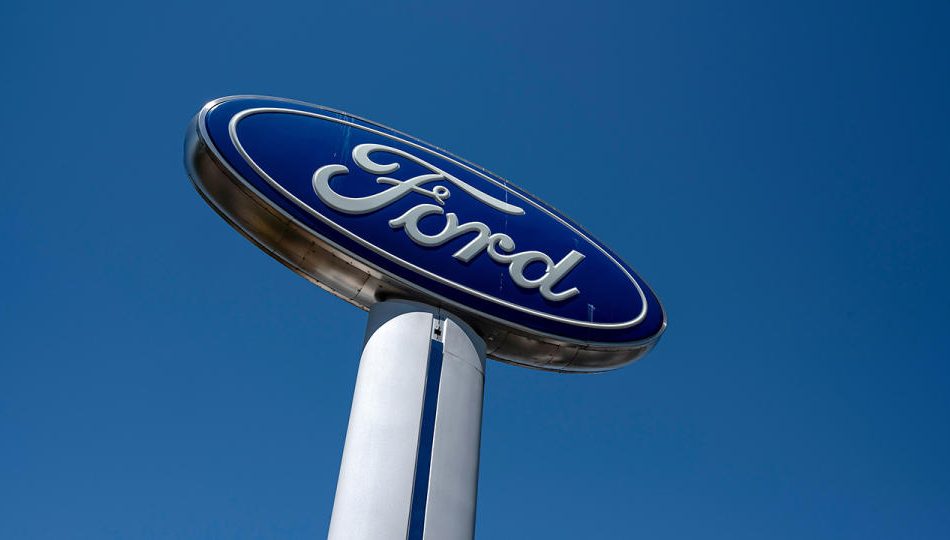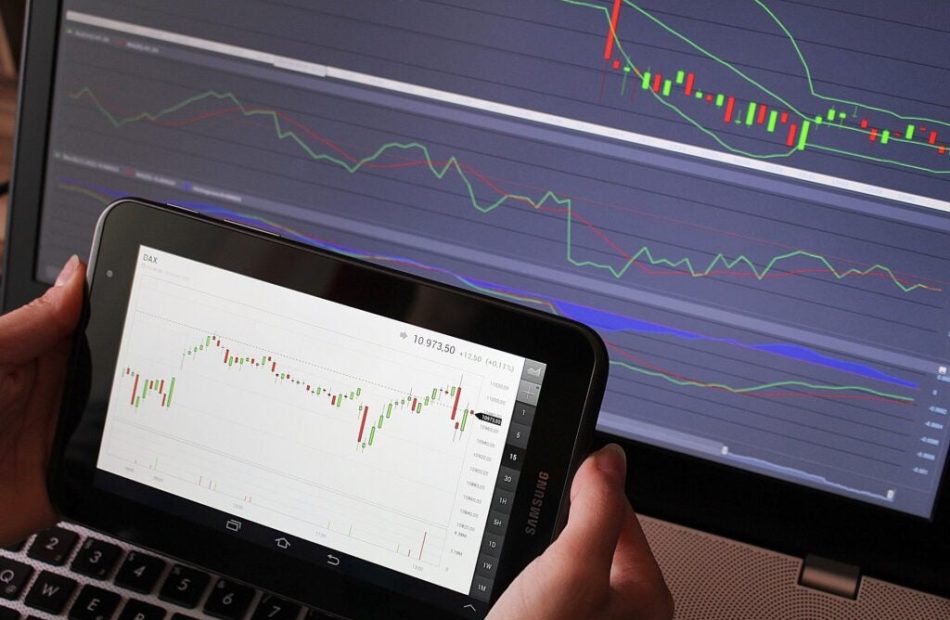Costco Is Opening New Stores in 2024. Here's What You Should Do Next
If you need more $4.99 rotisserie chickens or 72-pound Parmigiano Reggiano cheese wheels in your life, it helps to live near a Costco. But what if you don’t have the convenience of a nearby warehouse? Fortunately, Costco plans to add four new locations in the U.S. through the end of 2024.
Where are the new Costco locations?
As of August 2024, Costco had 884 locations worldwide, with 611 in the U.S. and Puerto Rico, and another 108 in Canada. The warehouse giant plans to add the following new warehouses in the U.S. through the end of the year:
-
Bend, Oregon (October 2024)
-
Napa, California (October 2024)
-
Pleasanton, California (October 2024)
-
Madison, Alabama (November 2024)
In August 2024, Costco opened the following new U.S. locations:
-
Covington, Louisiana
-
Ridgefield, Washington
-
Tomball, Texas
Costco has also recently opened or will soon open new warehouses in South Korea, Japan, Spain, and Mexico.
What to know about shopping at Costco
If you’re a Costco novice, you need to know a few facts before you dash over to your nearest warehouse club:
-
You’ll need to pay for a membership. Costco raised the price of an annual membership on Sept. 1, 2024, to $65 for Gold Star and Business memberships and $130 for Executive memberships.
-
Don’t count on sharing your membership card. Costco is cracking down on membership sharing by installing card scanners at each entrance. You’re allowed to bring up to two guests, but only members can make purchases.
-
You can’t pay with just any credit card. Costco only accepts Visa credit cards for payment, though you can also pay with most PIN-based ATM and debit cards, cash, check, or Costco Shop Cards (Costco’s version of its own gift card).
-
You don’t need a membership for some purchases. You can use Costco without a membership if you’re getting a prescription filled at the pharmacy, getting an eye exam, or buying booze in several states. However, most purchases require a membership.
Should you rush to join Costco?
If you’re on the fence about whether to join Costco, consider these questions before you shell out for a membership:
-
Is the location close enough that you’d actually shop there? If you’d spend an hour driving each way to shop at Costco, make sure the savings are enough to offset the time and transportation costs.
-
Will you save money buying in bulk? If you live alone or have limited storage space, buying giant quantities from Costco or another warehouse club may not be worth it.
-
Are you prone to impulse buying? You can buy everything from groceries to clothing, saunas, remote-controlled toilets, and more at your local Costco. If you tend to make impulse purchases, think twice before becoming a Costco member.
Should you decide to join Costco, you can bolster your savings with a credit card (but remember, only Visa credit cards are accepted). Take a look at our list of the best credit cards for Costco to earn cash back on Costco and Costco.com purchases.
Top credit card to use at Costco (and everywhere else!)
We love versatile credit cards that offer huge rewards everywhere, including Costco! This card is a standout among America’s favorite credit cards because it offers perhaps the easiest $200 cash bonus you could ever earn and an unlimited 2% cash rewards on purchases, even when you shop at Costco.
Add on the competitive 0% interest period and it’s no wonder we awarded this card Best No Annual Fee Credit Card.
Click here to read our full review for free and apply before the $200 welcome bonus offer ends!
We’re firm believers in the Golden Rule, which is why editorial opinions are ours alone and have not been previously reviewed, approved, or endorsed by included advertisers. The Ascent does not cover all offers on the market. Editorial content from The Ascent is separate from The Motley Fool editorial content and is created by a different analyst team.JPMorgan Chase is an advertising partner of The Ascent, a Motley Fool company. Robin Hartill has no position in any of the stocks mentioned. The Motley Fool has positions in and recommends Costco Wholesale, JPMorgan Chase, and Visa. The Motley Fool has a disclosure policy.
Costco Is Opening New Stores in 2024. Here’s What You Should Do Next was originally published by The Motley Fool
I've Been Writing About Social Security for Almost 10 Years. This Is the Best Advice I Can Give You
Thinking back on the first Social Security assignment of my career tends to make me laugh. Back then, which was about a decade ago, I found the idea of reporting on the topic daunting.
After all, I knew little about Social Security other than it being a program that pays benefits to people when they’re older. I had no idea when benefits started or what the rules for claiming them entailed.
These days, I could bore you with hours of conversation about Social Security’s numerous rules and nuances. And with a catalog of more than 1,000 articles on the matter, I can probably answer any question you have about how or when to claim benefits.
But with all of that Social Security knowledge floating around in my brain, there’s one piece of advice I’m eager to share more so than any other. And it’s something I feel strongly that every single person should know about Social Security ahead of retirement.
You can’t rely too heavily on those benefits
A lot of the Social Security content I’ve written through the years focuses on when to claim benefits. And that’s an important decision.
Your Social Security filing age plays a big role in determining what monthly benefit you get. You’re allowed to sign up for Social Security as early as age 62. But you’re not entitled to your complete monthly benefit based on your personal income history until several years later, or when your full retirement age arrives. Full retirement age is 67 for those born in 1960 or later.
There’s also the option to delay your Social Security claim past full retirement age. Each year you hold off boosts your monthly benefit by 8%, up until you turn 70. At that point, there’s no sense in delaying Social Security, since you can’t grow your benefits any longer.
But as important as it is to land on the right Social Security filing age, what’s even more important is to understand the role those benefits should play in your retirement finances.
Many people are shocked to learn that Social Security will only replace about 40% of the typical wage-earner’s pre-retirement income. And if that sounds like a small percentage to you, well, it is.
It’s common for retirees to need 70% to 80% of their former income once their job-related paychecks disappear. This puts seniors who don’t save independently and rely on Social Security alone in a very tight spot.
So if there’s one piece of Social Security advice I’d give everyone, it’s to not plan to live off of those benefits alone in retirement, and instead, save as well as possible.
This doesn’t mean you have to sacrifice every bit of extra spending during you working years to retire with millions of dollars. But it does mean you should try to contribute to a retirement plan consistently, and invest your savings through the years for additional growth.
It pays to be informed
Reading about Social Security may be interesting to me, but I get that it’s not a top activity on most people’s lists. However, those benefits will likely play an essential role in your retirement finances one way or another. So it’s a good idea to get reasonably educated on Social Security while you’re still earning a paycheck from a job.
This doesn’t mean you have to research Social Security endlessly like I do. But try to set yourself up with a basic understanding. And also, get an estimate of your future Social Security so you know what number to expect to some degree. It’ll only put you in a stronger position to approach retirement with confidence.
The $22,924 Social Security bonus most retirees completely overlook
If you’re like most Americans, you’re a few years (or more) behind on your retirement savings. But a handful of little-known “Social Security secrets” could help ensure a boost in your retirement income. For example: one easy trick could pay you as much as $22,924 more… each year! Once you learn how to maximize your Social Security benefits, we think you could retire confidently with the peace of mind we’re all after. Simply click here to discover how to learn more about these strategies.
View the “Social Security secrets” ›
The Motley Fool has a disclosure policy.
I’ve Been Writing About Social Security for Almost 10 Years. This Is the Best Advice I Can Give You was originally published by The Motley Fool
Ford recalls over 90K vehicles in response to risk of engine intake valve breaking
A recall of roughly 90,700 Ford and Lincoln vehicles is underway.
The Michigan-based automaker said in a National Highway Traffic Safety Administration (NHTSA) recall report that the recall was prompted by the risk that the engines in the affected 2021-2022 Ford Bronco, Ford Edge, Ford Explorer, Ford F-150, Lincoln Aviator and Lincoln Nautilus vehicles “may contain intake valves that have a propensity to crack and break.”
All the 90,700 recalled SUVs and pickup trucks feature a 2.7-liter or 3-liter Nano EcoBoost Engine, according to the recall report.
Ford notified NHTSA of the recall on Aug. 23.
FORD CANCELS PLANS FOR ELECTRIC THREE-ROW SUV
“An engine intake valve that fails may lead to catastrophic engine damage resulting in a loss of motive power,” Ford said in the recall report. “A loss of motive power can increase the risk of a crash.”
The problem with the engine intake valve is most likely to appear early in the vehicle’s life if the component is susceptible to cracking, Ford told FOX Business.
The issue has not caused any accidents or injuries to date, according to documents Ford filed with the NHTSA.
“Our goal is to prevent quality issues from happening in the first place,” Ford said in a statement to FOX Business. “When they do occur, our focus is on responding quickly with a recall or service action to prevent our customers from experiencing issues with the least inconvenience possible. We are proud that our launch quality has reached best-in-class levels, and our long-term quality is showing improvement.”
Dealers will install a new engine in recalled vehicles that do not pass an engine cycle test for free. When getting their vehicles fixed, impacted customers will have access to Ford’s pick-up, delivery and rental services, according to the company.
The automaker will tell owners of affected Ford and Lincoln vehicles about the recall in early October using letters, according to the NHTSA recall report.
FORD, MAZDA ISSUE ‘DO NOT DRIVE’ ADVISORY FOR 457,000 VEHICLES
“Owners who have paid to have these repairs completed at their own expense may be eligible for reimbursement, in accordance with the recall reimbursement plan on file with the NHTSA,” Ford said.
Meanwhile, notification of dealers is slated for the end of this month.
FORD RECALLS MORE THAN 30K MUSTANGS DUE TO STEERING ISSUE
Ford said the Ford and Lincoln vehicles subject to the recall were built in 2021.
The automaker sells several million vehicles across its Ford and Lincoln brands each year. It notched 4.4 million global wholesale sales last year, according to the company.
Original article source: Ford recalls over 90K vehicles in response to risk of engine intake valve breaking
This AI Stock Just Raised Its Dividend by 15%, and Even More Passive Income Should Be Coming
While a few big semiconductor names tend to garner all of the AI headlines, the growing AI buildout is benefiting the entire chip production ecosystem.
That includes semiconductor equipment stocks, tasked with making more volumes of increasingly complex chips. Amid high demand for more complex chips, revenue and profit are sure to flow to these companies.
That’s happening to one semi-cap equipment leader, which just announced a 15% increase to its quarterly payout.
Lam Research is gushing cash and poised for growth
Chip manufacturing giant Lam Research (NASDAQ: LRCX) is one of only a few major players in crucial etch and deposition steps of the chipmaking process. In particular, Lam specializes in equipment used to stack chip components in a vertical manner. That benefited the company when NAND flash went from planar structures to stacked 3D structures a decade ago. Fortunately for Lam, both high-bandwidth DRAM memory and advanced logic chips are now implementing more 3D structures. And even more fortunately, DRAM and advanced logic is where the bulk of AI-related growth is today.
On the recent conference call with analysts, management highlighted several new products which offer advanced etching capabilities for new complex vertical structures for AI. CEO Tim Archer noted: “Overall, etch and deposition are becoming increasingly critical to addressing the complex semiconductor requirements of a growing AI environment. We are excited by the breadth of opportunities we see ahead for the company, especially those created by technology inflections to gate-all-around, backside power delivery, advanced packaging, and dry EUV resist processing.”
AI-fueled growth is profitable for Lam, too
What’s especially positive about Lam’s growth is that it also comes with high margin and cash flow, which fuels the company’s growing dividend. Over the past 12 months, Lam achieved an impressive 30% operating margin and 45% return on equity. The margin is bolstered by Lam’s technological moat, and the fact that it has limited competition, mainly just from Applied Materials (NASDAQ: AMAT). Both Lam and Applied have similar metrics, showing rational pricing. Thus, it’s no surprise that Applied is also a terrific dividend growth stock.
Last Thursday, Aug. 29, Lam announced it would be raising its quarterly payout by 15%, from $2.00 to $2.30, good for a $9.20 annual dividend. That’s a yield of about 1.12% at the current stock price.
While a 1.12% yield may not seem like much today, the 15% increase is a promising sign. If a company has the capacity to raise its dividend above the rate of inflation for long periods, that stock could be a great long-term holding to provide hefty retirement income well into the future.
Lam’s payout could grow double digits for years
Like Applied, Lam has a low payout ratio of just 27.6%, meaning it pays out just over a quarter of its net income as dividends. While not quite as low as Applied’s 15% payout ratio, it’s still a pretty low ratio, with ample room to increase. Moreover, Lam’s current dividend yield is higher than Applied’s at 0.83%.
Lam’s earnings may also be more cyclically depressed now. While Lam has displayed excellent long-term growth over time, it is just now poised to come out of recent cyclical dip. Meanwhile, Applied has had steadier earnings grower. The difference probably lies in Lam’s outsize exposure to NAND flash investment, which has been paltry in recent years following the pandemic.
But if Lam and Applied have similar long-term growth prospects, Lam’s earnings are more cyclically depressed and could bounce back harder. After all, the NAND recovery hasn’t happened yet, so as Lam experiences a NAND recovery combined with new AI growth opportunities in DRAM and advanced logic, its normalized earnings should go higher.
That means Lam’s higher payout ratio would be lower on more normalized, through-cycle earnings.
Share repurchases add fuel to the fire
Also like Applied, Lam is returning even more cash to shareholders beyond the dividend through share repurchases. Last quarter, Lam repurchased $373.5 million, greater than the $261.4 million paid out as dividends. And Lam has been even more aggressive with repurchases in the past when its share price was lower. For instance, it repurchased $980 million in stock in the June 2023 quarter.
That’s good capital allocation right there, and is how Lam managed to lower its share count by over 10% since late 2019, all while maintaining a cash-rich balance sheet of $5.85 billion in cash against just $4.98 billion in debt.
In sum, a company with growing earnings, a declining share count, and a low payout ratio is a terrific recipe for lots of dividend per share growth in future. Like peer Applied Materials, Lam is poised to deliver just that in the years ahead, especially with AI tailwinds at its back.
Should you invest $1,000 in Lam Research right now?
Before you buy stock in Lam Research, consider this:
The Motley Fool Stock Advisor analyst team just identified what they believe are the 10 best stocks for investors to buy now… and Lam Research wasn’t one of them. The 10 stocks that made the cut could produce monster returns in the coming years.
Consider when Nvidia made this list on April 15, 2005… if you invested $1,000 at the time of our recommendation, you’d have $731,449!*
Stock Advisor provides investors with an easy-to-follow blueprint for success, including guidance on building a portfolio, regular updates from analysts, and two new stock picks each month. The Stock Advisor service has more than quadrupled the return of S&P 500 since 2002*.
*Stock Advisor returns as of August 26, 2024
Billy Duberstein and/or his clients have positions in Applied Materials and Lam Research. The Motley Fool has positions in and recommends Applied Materials and Lam Research. The Motley Fool has a disclosure policy.
This AI Stock Just Raised Its Dividend by 15%, and Even More Passive Income Should Be Coming was originally published by The Motley Fool
Home Sold for 27% Of Its $1.8M Value — And It's All Thanks To A Family Feud Gone Wild. Here's What Really Happened
A modest San Francisco home that hit the market for a surprising $488,000 has sold for its asking price, but the sale has uncovered deep family tensions and a saga of legal entanglements.
Don’t Miss:
- If there was a new fund backed by Jeff Bezos offering a 7-9% target yield with monthly dividends would you invest in it?
“This whole thing is a mess,” said Todd Lee, the seller, in a conversation with the San Francisco Chronicle. Todd accepted an offer from his sister, Cheryl Lee, 66, who had been living in the house with their 83-year-old mother, Sandra Lee. The low listing price of the property, valued at $1.8 million, came with a significant caveat: the tenants, who happen to be family, may have the right to stay there until 2053.
Trending:
The property listing indicated that the house was occupied by tenants whose lease might allow them to stay for nearly 30 years. The tenants pay $416.67 a month, plus utilities.
The home’s history dates back to the 1970s when Sandra’s parents bought it for $52,000. They lived there until they died, but from that time on, when the property was listed, the family dynamics took a sharp turn when the house was listed for sale. Sandra Lee accused her sons Todd and Cedric Goo of a supposed breach of trust by selling the property behind her back, which she alleged goes against her wishes.
See Also:
In an interview previously with The San Francisco Standard, Sandra claimed that her late stepfather, Kenneth Goo, quietly prepared a lease for her ahead of his death in 2022. She said it assured low rent and occupancy rights to 2053. “If it wasn’t for the lease that [my son] didn’t know about that was made in 2018, I don’t know where we’d be,” she said. “It’s unfathomable, the deception, the betrayal — this is my son doing this to me.”
Todd, however, denied any wrongdoing. He explained to the Chronicle that he chose to sell the home to avoid a drawn-out legal battle, even though other buyers had offered more money. “I wanted to handle it quietly,” he stated. “When my mother spoke out, it got exponentially worse.”
Trending:
As trustee of the family trusts, Todd shared that the house is part of a complex financial setup involving Cheryl, Sandra and Cedric. The three are beneficiaries of the trust, with Sandra and Cedric holding a 37.5% share, while Cheryl has 25%. Before his passing, Kenneth Goo set up a lease in 2019 requiring the tenant to cover property taxes and insurance, but this lease was amended two years later to cap these costs at $5,000 annually, with an extension to 2053.
After Kenneth’s death, the home’s market value soared from $143,152 to $1.4 million, and property taxes went from $1,717 to $16,928 annually. Todd mentioned that Cheryl covered the latest tax bill, and the family trusts’ lawyer, Robert Roddick, confirmed this. He also revealed that a broker valued the house at $1.8 million — if the tenants weren’t a factor.
Despite the drama, the house was sold to Cheryl and Sandra for $488,000. According to Roddick, this means that Sandra and Cheryl could own a home worth $1.8 million while Cedric receives a reduced share from the sale. The sale may have closed, but the story behind it continues to unravel.
Read Next:
Market News and Data brought to you by Benzinga APIs
© 2024 Benzinga.com. Benzinga does not provide investment advice. All rights reserved.
Schwab's Secret to Doubling Your Retirement Fund
After beginning the year at record levels, global events have caused market volatility to jump and equities to fall. The S&P 500 Index is experiencing its first major correction since 2020, so investors are understandably looking to safeguard their assets. Investment firm Charles Schwab says that increased diversification is the key to weathering such an investment climate. However, according to recent research, most self-directed retirement savers just aren’t protecting their hard-earned funds in the right ways. In fact, investors who engage a financial advisor have saved nearly twice as much for retirement as those who don’t. Here’s why.
A financial advisor could help you save for retirement and select investments that align with your financial goals. Find a qualified advisor today.
Schwab Research Demonstrates the Power of Financial Advice
Taking data from its Preferred Choice Retirement Accounts (PCRAs), a self-directed brokerage account offered within defined contribution retirement plans, Charles Schwab has found that, for the first quarter of 2022, plan participants who work with financial advisors had an average balance of $535,354–nearly twice as much as the $286,008 held by non-advised participants.
Broken down by age group, Schwab analysts found that, perhaps unsurprisingly, Baby Boomers (aged 58 to 75) held the largest balances of all the PCRAs, averaging $520,616. Gen X participants, aged 42-57, held an average of $299,520 and Millennials, aged 30-41, had $102,113.
Of the total PCRA participants, only 19.2% chose to work with a financial advisor, but of those, roughly half of the advised accounts belonged to the Gen X grouping. Baby Boomers held 32.5% of the advised accounts and Millennials held 14.9%.
Notably, working with a financial advisor meant more trades in the last quarter than not, averaging 19.7 trades vs. 12.3 for the non-advised. Furthermore, advised participants had a more diverse allocation of assets and a lower concentration of individual equities.
If you’re ready to be matched with local advisors that can help you achieve your financial goals, get started now.
How Retirement Savers Can Take Advantage
Working with a financial advisor can help savers pinpoint a suitable strategy for their finances, relieving some of the stress associated with working towards a large financial goal like retirement. Given an investor’s risk tolerance, time horizon and other factors, not every investment strategy may prove suitable.
Schwab’s data provides some food for thought. First, advised accounts diversified their holdings, not putting more than 4.05% in any one exchange-traded fund (ETF). Although advised participants held similar equities to the non-advised–Apple stock coming in strong first for both groups–the percentage was slightly lower, 9.37% of advised equity assets in Apple vs. 12.59% for the non-advised.
Advised participants also held a lower percentage in cash, 5.70% vs. 15.71% for the non-advised. While that may protect assets from a dive in market value, timing the market is difficult and holding a greater percentage of funds in cash could reduce the long-term earning potential of an investor’s portfolio. At the same time, advisors seemed to favor a 17.57% mutual fund asset allocation, whereas non-advised participants held 20.10% in mutual funds. According to the data, advised participants appeared to increase fixed-income assets from Q4 2021.
Consider speaking with a financial advisor to build a retirement plan aimed at your personal goals.
Bottom Line
Recent data from Charles Schwab indicates that retirement plan participants who work with a financial advisor can nearly double the amount they save for retirement. Financial advisors seemed to favor a heartier diversification strategy, reducing exposure to individual assets and thereby reducing risk in this volatile market. While non-advised participants seemed to choose similar equities and funds for their investments, targeted financial advice may have resulted in improved portfolio outcomes.
Wealth-Building Tips
-
Not sure what asset allocation mix and strategies will help you meet your long-term goals? For a solid financial plan, consider speaking with a qualified financial advisor. SmartAsset’s free tool matches you with up to three financial advisors who serve your area, and you can interview your advisor matches at no cost to decide which one is right for you. If you’re ready to find an advisor who can help you achieve your financial goals, get started now.
-
Use SmartAsset’s free investment calculator to get a good estimate of how to grow your money over time.
-
Keep an emergency fund on hand in case you run into unexpected expenses. An emergency fund should be liquid — in an account that isn’t at risk of significant fluctuation like the stock market. The tradeoff is that the value of liquid cash can be eroded by inflation. But a high-interest account allows you to earn compound interest. Compare savings accounts from these banks.
-
Are you a financial advisor looking to grow your business? SmartAsset AMP helps advisors connect with leads and offers marketing automation solutions so you can spend more time making conversions. Learn more about SmartAsset AMP.
Don’t miss out on news that could impact your finances. Get news and tips to make smarter financial decisions with SmartAsset’s semi-weekly email. It’s 100% free and you can unsubscribe at any time. Sign up today.
For important disclosures regarding SmartAsset, please click here.
Photo credit: ©iStock.com/marchmeena29, ©iStock.com/designer491, ©iStock.com/FG Trade
The post Schwab Says This Can Double Your Retirement Savings appeared first on SmartAsset Blog.
Stock market today: Nasdaq leads rough kickoff to September as Nvidia sell-off continues
Investors began September trading with a thud as stocks tumbled on Tuesday to start a historically tough month for markets, with AI darling Nvidia (NVDA) and chip names leading tech stocks down. The turn into the red comes amid a crucial week of data on the economy and labor market highlighted by an influential monthly jobs report.
The Dow Jones Industrial Average (^DJI) slid 1.5%, or over 600 points. The S&P 500 (^GSPC) dropped 2.1%, while the tech-heavy Nasdaq Composite (^IXIC) pulled back 3.3%.
Stocks are retreating from near highs as Wall Street hunkers down after a rollercoaster August, with the prospect of a potentially stormy September ahead. Investors are assessing the risk of data shocks or presidential race surprises in a month that’s typically terrible for traders.
Nvidia (NVDA) fell almost 10% Tuesday, as investors continue to withdraw following a lackluster earnings report and lingering questions about the future of the AI trade. Other chip stocks fell in tandem, with Broadcom (AVGO), Qualcomm (QCOM), and Taiwan Semiconductor Manufacturing Company (TSM) all down more than 6%.
Also top of mind is the August jobs report, due out on Friday, which could influence how deeply the Federal Reserve cuts interest rates at its meeting this month. With inflation now cooling, policymakers are on alert for the labor market to fall into place.
For investors, the focus is on whether the signs of slowing in the July jobs report were overstated — or an early warning of a broader slowdown. Any hints of stress should put pressure on the Fed to make a bigger reduction in rates. As of Tuesday, traders were pricing in 39% odds of a 50 basis point cut instead of 25 basis points, per the CME FedWatch Tool.
A measure of US manufacturing ticked up last month, according to fresh figures from the Institute for Supply Management (ISM). But the metric reflected slowed factory activity, with a reading below a threshold that suggests a contraction in the manufacturing sector.
Live10 updates
A Single Deal With Elon Musk's Tesla Catapulted This Unknown Family To An $800 Million Fortune
One South Korean family has almost reached billionaire status, thanks to a deal with Elon Musk’s Tesla Inc.
Don’t Miss:
L&F Co., a company that makes cathodes for electric vehicle batteries, landed a $2.9 billion order from Tesla, according to a 2023 Bloomberg report. This windfall has pushed the Jae-hong family’s net worth to over $800 million.
L&F might not be a name you recognize, but it plays a big role in the electric vehicle world. The company was founded in 2000 and began developing cathode materials in 2005. While it has been supplying Tesla through LG Energy Solution for a while, this direct deal with Tesla is a major milestone.
Trending:
The impact on L&F’s stock was pretty much immediate. After the announcement, the company’s share price skyrocketed by 82% in 2023, making the Jae-hong family, who own a significant chunk of L&F’s shares, some of South Korea’s wealthiest.
There’s more to the Jae-hong family’s story. Hur Jae-hong, the chairman of L&F, is connected to big names like LG Group and GS Group. His great-grandfather, Huh Man-jung, co-founded LG in 1947, highlighting a strong family legacy in business.
This deal is transformative for L&F’s business strategy. Previously, the company relied heavily on LG Energy Solution, which accounted for about 80% of its revenue. By 2025, analysts project this dependence will decrease to 50%, allowing L&F to diversify its client base and strengthen its market position.
See Also:
The contract with Tesla is set to run from Jan. 1, 2024, to Dec. 31, 2025. L&F will provide high-nickel cathode materials for use in the automotive, energy generation and storage sectors in the U.S. and other regions.
Industry experts estimate that the contract will supply enough material for over 780,000 electric vehicles. This could significantly boost Tesla’s production capacity, especially for larger vehicles like the Semi and Cybertruck, which are expected to use high-nickel batteries.
Trending:
Ripple effects of this deal extend beyond L&F. Other companies in the electric vehicle supply chain, such as Kumyang Co. and Ecopro Co., have also seen their stock prices soar. For instance, Ryu Kwang-ji, the chairman of chemical company Kumyang Co., saw his stake in the firm balloon to $1.4 billion after the share price surged more than 1,600% in the past year
The L&F-Tesla partnership is a prime example of how a big deal can lead to major financial success and shows how quickly the electric vehicle market is evolving.
Read Next:
“ACTIVE INVESTORS’ SECRET WEAPON” Supercharge Your Stock Market Game with the #1 “news & everything else” trading tool: Benzinga Pro – Click here to start Your 14-Day Trial Now!
Get the latest stock analysis from Benzinga?
This article A Single Deal With Elon Musk’s Tesla Catapulted This Unknown Family To An $800 Million Fortune originally appeared on Benzinga.com
© 2024 Benzinga.com. Benzinga does not provide investment advice. All rights reserved.
Why Zhibao Technology Shares Are Trading Higher By Around 19%; Here Are 20 Stocks Moving Premarket
Shares of Zhibao Technology Inc. ZBAO rose sharply in today’s pre-market trading after the company announced that it has won a tender to provide high-end medical third party administration services to the People’s Insurance Company of China Limited.
Zhibao Technology shares jumped 18.8% to $3.99 in the pre-market trading.
Here are some other stocks moving in pre-market trading.
Gainers
- Sify Technologies Limited SIFY gained 129.4% to $0.7599 in pre-market trading. Sify becomes first in India to achieve NVIDIA DGX-ready data center certification for liquid cooling to enable breakthrough AI performance.
- Aptose Biosciences Inc. APTO rose 48.1% to $0.6040 in today’s pre-market trading after the company announced a $10 million loan through a Facility Agreement with Hanmi Pharmaceutical Co.
- Conduit Pharmaceuticals Inc. CDT gained 25.8% to $0.1549 in pre-market trading after declining over 5% on Friday.
- Perfect Moment Ltd. PMNT gained 25.2% to $1.29 in pre-market trading.
- Cyclacel Pharmaceuticals Inc CYCC gained 21.7% to $1.28 in pre-market trading.
- Polar Power Inc POLA gained 18.8% to $0.47 in the pre-market trading session. Polar Power, last month, posted a profit for the second quarter.
- QuantaSing Group Ltd- ADR QSG gained 13.2% to $1.97 in pre-market trading.
- Shoals Technologies Group, Inc. SHLS rose 11.5% to $6.01 in pre-market trading.
- Autozi Internet Technology (Global) Ltd. AZI gained 5% to $3.15 in pre-market trading amid post-IPO volatility.
Losers
- Bluejay Diagnostics Inc BJDX fell 13.3% to $0.16 in pre-market trading after declining around 6% on Friday.
- Focus Universal Inc. FCUV shares fell 13.1% to $0.2338 in pre-market trading. Focus Universal shares jumped over 41% on Friday after the company in a Form4 filing disclosed that CEO Desheng Wang bought 302,100 shares of stock at an average price of $0.18 per share.
- Staffing 360 Solutions, Inc. STAF shares declined 12.1% to $2.05 in pre-market trading.
- Graphex Group Limited GRFX fell 12% to $0.21 in pre-market trading after surging 13% on Friday.
- ShiftPixy Inc PIXY shares fell 11.8% to $1.04 in pre-market trading. ShiftPixy recently announced the pricing of $2.5 million offering.
- Agape ATP Corporation ATPC shares declined 11.4% to $2.26 in pre-market trading after jumping 60% on Friday.
- Autonomix Medical Inc AMIX shares fell 10.9% to $0.60 in pre-market trading after jumping 14% on Friday.
- Theriva Biologics, Inc. TOVX fell 10% to $5.31 in today’s pre-market trading after gaining over 25% on Friday.
- United States Steel Corporation X shares dipped 5.8% to $35.70 in pre-market trading. Vice President Kamala Harris has expressed her support for American ownership of United States Steel, amidst ongoing foreign acquisition attempts.
- Diversified Energy Company PLC DEC declined 5.6% to $11.54 in pre-market trading. Keybanc analyst Tim Rezvan, last week, initiated coverage on Diversified Energy with an Overweight rating and announced a price target of $18.
Now Read This:
Market News and Data brought to you by Benzinga APIs
© 2024 Benzinga.com. Benzinga does not provide investment advice. All rights reserved.










